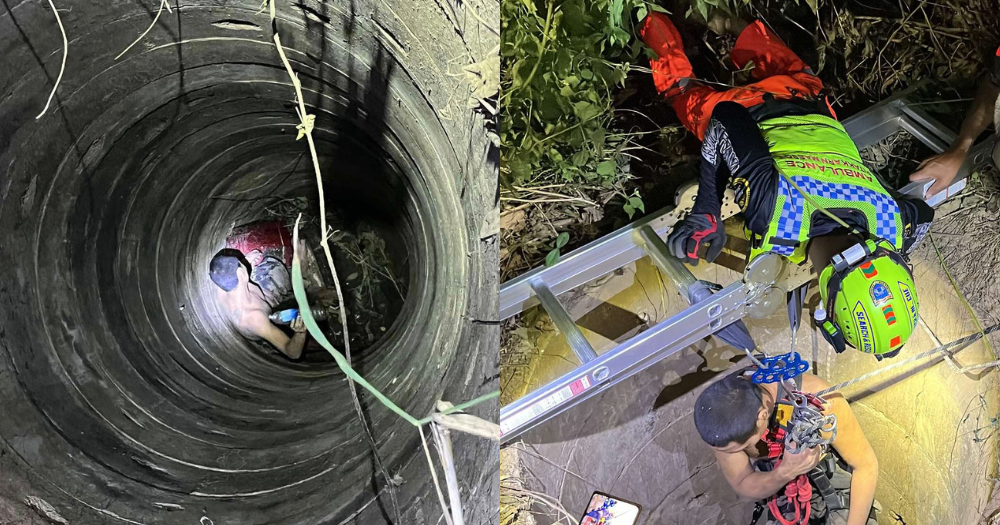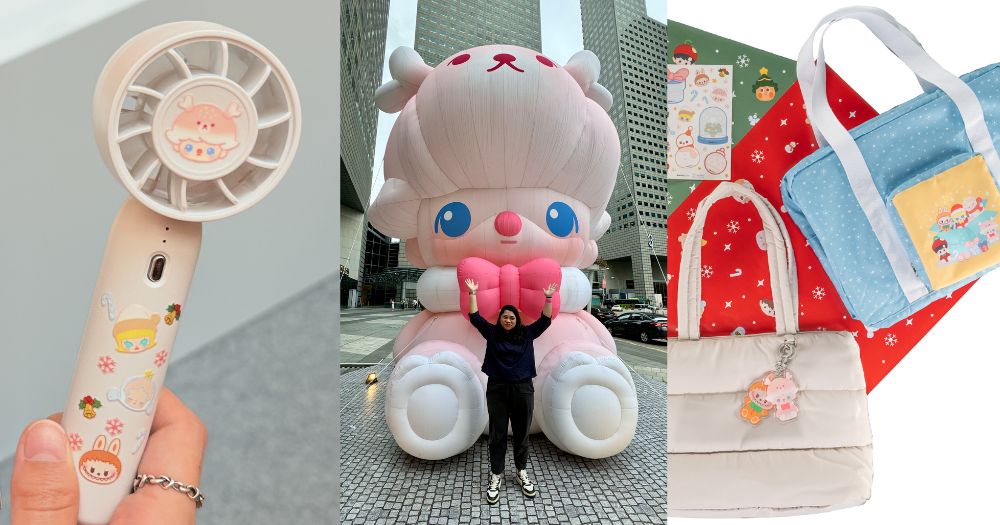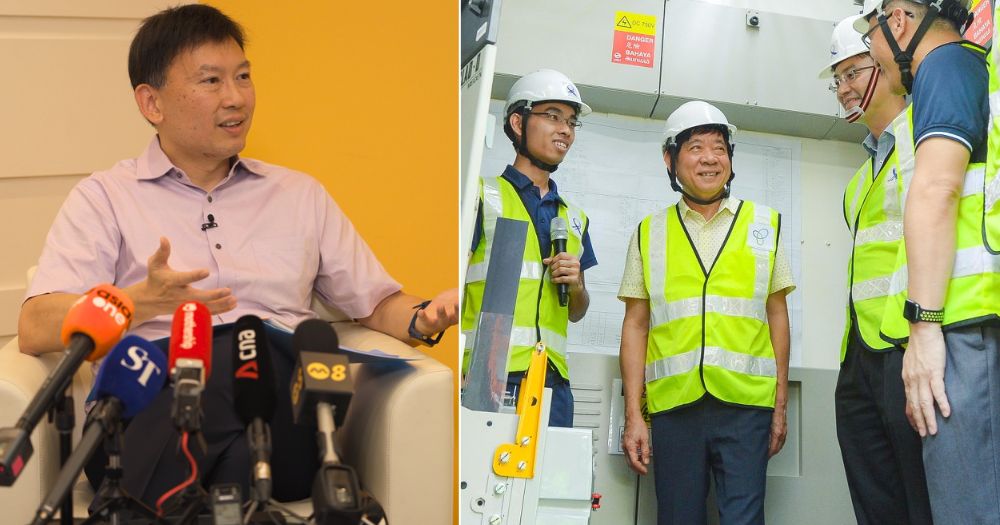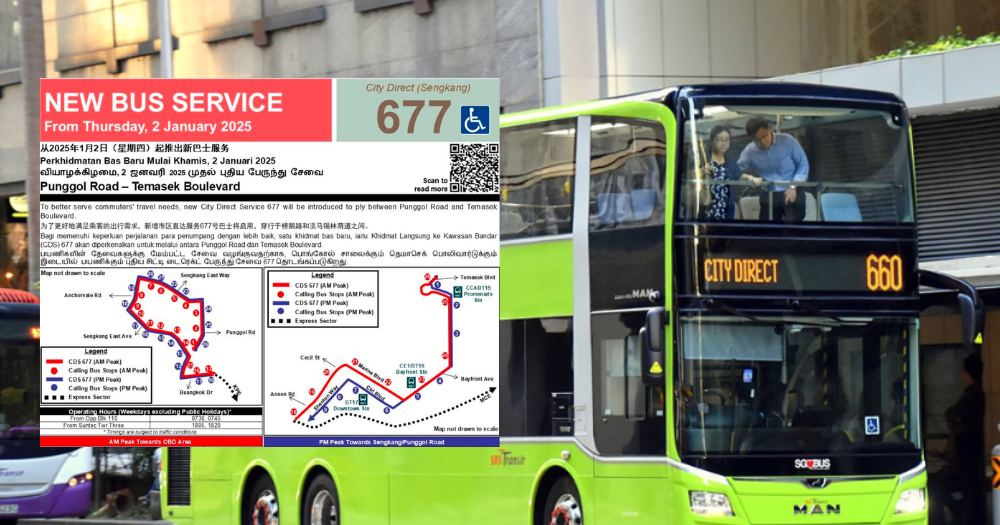I shadowed a community nurse at St Luke’s Hospital and learnt why community care plays a critical role in the healthcare landscape
An eye-opening experience.

Having studied in the Bukit Batok area, I have passed by St Luke’s Hospital (SLH) numerous times, but never imagined I would step foot inside the hospital itself.
But there I was on a sunny afternoon, ready to shadow a nurse and learn how the community hospital plays an integral part in the community.
A pioneering community care provider, SLH supports patients’ needs through its holistic care ecosystem spanning inpatient, outpatient, home care and community-based programmes.
Their specialised areas of care include rehabilitation, dementia, wound and palliative care.
 St Luke’s Hospital. Image by Keyla Supharta.
St Luke’s Hospital. Image by Keyla Supharta.
My first visit to SLH revealed many things I never knew, and it changed the way I perceive healthcare in Singapore.
What is ‘community care’?
Community care provides various intermediate and long-term care services for people who need further care and treatment after being discharged from a general hospital, as well as seniors living in the community who may need support with their daily activities.
Healthcare professionals in community care services work in various settings. These include community hospitals, nursing homes, senior care centres, hospices and active ageing centres. In addition, community care professionals also visit patients at their homes as part of home-based care.
Stepping foot into one of the wards, I followed quietly behind Koh Zuo En, a Community Nursing Scholarship recipient, as she started her afternoon shift.
Koh made her rounds in a ward that, at first glance, seemed no different from one in a general hospital.
 Koh administering medicine. Image by Keyla Supharta.
Koh administering medicine. Image by Keyla Supharta.
Embarking on the nursing and caregiving path
As I continued to shadow Koh, I was pleasantly surprised to see many patients warmly greeting her as she addressed each of them by name, while preparing their medication.
Koh’s passion for nursing started when her late grandmother was diagnosed with cancer.
“At that time, she was undergoing chemotherapy and had a stoma (a surgical opening in the stomach that connects the bowel to the surface) which needed regular change,” Koh explained.
She took on the role of her grandmother’s caregiver, learning how to change the stoma pouch from a senior nurse.
“[I] found [the experience] to be meaningful,” she shared.
Pursuing nursing seemed like a natural path for Koh to help those around her.
Friendly staff
“The staff [like Koh] here are very friendly,” shared William, a patient in the ward, when asked about his experience at SLH.
William had previously been admitted to SLH after suffering a fall at home.
Following his discharge, he experienced another fall and was re-admitted to a general hospital. Once William’s condition stabilised, he was referred back to SLH for rehabilitation.
 William interacting with Koh. Image by Keyla Supharta.
William interacting with Koh. Image by Keyla Supharta.
Rehabilitation supports individuals in improving their physical, mental, or cognitive abilities that may have been affected by injury, surgery, illness, or age-related decline so that they can restore functional ability and carry out activities of daily living such as walking, feeding and toileting.
Many conditions may require rehabilitation care, including stroke, neurological, musculoskeletal, cancer, cardiopulmonary, and geriatric conditions.
To restore his strength and improve his functional abilities, the multi-disciplinary care team developed a personalised care plan for William.
William shared that he participates in physiotherapy and occupational therapy, which include walking exercises to enhance mobility and cognitive training activities like matching puzzles.
 Leisure therapy session for inpatients. Image provided by SLH.
Leisure therapy session for inpatients. Image provided by SLH.
Beyond therapy, patients can also participate in a range of activities through SLH’s leisure therapy programme, which aims to enhance their overall well-being.
These initiatives, including horticulture, board games, dancing and arts and crafts, not only promote social interaction but also cultivate a sense of community.
Preparing patients for discharge
After wrapping up her rounds at the ward, Koh brought me to the Inpatient Rehabilitation Gym.
The facility offers gym-based and robotics therapy advances to help patients regain their strength and functional ability, with many practical rehabilitation activities centred around patients regaining their strength and mobility for everyday living.
 SLH’s Inpatient Rehabilitation Gym. Image by Keyla Supharta.
SLH’s Inpatient Rehabilitation Gym. Image by Keyla Supharta.
I was surprised to see a mini traffic light in the corner of the gym.
This real-world simulation trains patients’ walking speed and builds confidence when they return home to the community.
For most of us, crossing the road is a daily activity that we would do without batting an eyelid.
But there are patients here who would need to re-learn the basics of road safety after a health episode.
 SLH’s traffic light simulation. Image by Keyla Supharta.
SLH’s traffic light simulation. Image by Keyla Supharta.
The gym also has a small “supermarket” corner for patients to practise grocery shopping independently as part of occupational therapy.
 SLH’s “supermarket” corner. Image provided by SLH.
SLH’s “supermarket” corner. Image provided by SLH.
Similarly, this therapy is designed to prepare patients when they return to their daily lives upon discharge.
An enriching experience
Towards the end of my shadowing experience, I asked Koh if she had any favourite or memorable moments while working at SLH.
“Working at SLH has been an enriching experience as the hospital adopts a holistic team-based approach in the care of our patients,” she said.
Koh shared that in the area of rehabilitation, SLH’s iReX programme uniquely integrates traditional rehabilitation such as physiotherapy, occupational therapy and speech therapy with music and art therapy, to address not only the physical, but also the social and emotional needs of patients. iReX also integrates rehabilitation with fitness, empowering individuals to move beyond functional recovery towards greater independence and improved quality of life.
“I am especially intrigued when I see the music therapist working together with the physiotherapist and occupational therapist to encourage the patient to stand up,” Koh added.
To a layman like me, the idea of music therapy certainly sounds fascinating.
Music therapy
To learn more about music therapy, I was introduced to Tan Xueli, Principal Music Therapist at SLH.
Tan shared more about the impact of music on the brain in promoting neuroplasticity (a term to describe the brain’s ability to re-wire itself and absorb information to evolve and manage new challenges) indicated in neurorehabilitation.
“Music therapy not only rehabilitates the sensorimotor, cognition, and speech and language domains. More importantly, it concurrently restores the personhood of our patients,” she said.
I observed a joint therapy session, where a music therapist worked together with a physiotherapist to engage in pre-gait training for a patient.
From an untrained eye, this session looked simplistic as all we saw was the music therapist strumming a guitar while the physiotherapist supported the patient in stepping on two bells on the ground while keeping the beat.
However, I was surprised to learn that this is a form of music therapy known as “Neurologic Music Therapy”.
More specifically, this technique is called Patterned Sensory Enhancement (PSE), where musical patterns are employed to organise motions into coherent and functional movement patterns and sequences.
During this pre-gait training session, the rhythm of the music serves as a cue for the patient to lift her foot alternately while standing on the spot.
The music therapist provides live music so that she can adjust the speed of the musical cue according to the patient’s ability.
The role of the physiotherapist is to support and stabilise the patient while she shifts her weight from side to side during the leg raises.
 Patient in a joint music therapy and physiotherapy session. Image by Keyla Supharta.
Patient in a joint music therapy and physiotherapy session. Image by Keyla Supharta.
My final stop of the day was a quick tour of St Luke’s Community Clinic (SLCC) — a one-stop primary care clinic which focuses on preventive and personalised healthcare plans to help manage chronic health conditions, complex cases with comorbidities and age-related decline.
In the clinic, I was surprised to find many older adults exercising enthusiastically at the St Luke’s Community Gym (Gym-Up), designed to support those within the pre-frail and robust frailty groups to enhance their daily function through fitness.
Gym-Up serves patients who have completed their rehabilitation and are motivated to enhance strength, balance and endurance through personalised fitness training or group exercises. It is also open to the public.
The most rewarding of all
My afternoon at SLH has reshaped my understanding of community care.
During my shadowing experience, I saw firsthand how community care works, and how SLH supports the community in holistic healing beyond the hospital walls.
From personalised care in the wards, integrated rehabilitation services, and leisure therapy to prevent social isolation, to senior-friendly fitness programmes that help one to maintain their health post-discharge, I was impressed by the comprehensive services available.
At the end of the day, I realised the importance and necessity of the community care sector in supporting patients like William.
These services play a vital role for individuals transferred from general hospitals, whose conditions have stabilised but who still require longer-term rehabilitation before reintegrating into their communities.
However, as highlighted by Koh, a patient’s recovery is also very much dependent on one’s home environment and support system.
Just as it takes a village to raise a child, it similarly takes a "kampong" to support a patient’s recovery journey.
“Without effectively engaging caregivers alongside the patient’s recovery journey, there is a high chance that patients may struggle to cope when they return home,” Koh shared.
“It made me realise how crucial it is to build therapeutic relationships and maintain clear communication, not just with our patients but also with their caregivers, to ensure the best outcomes.”
And of course, “the most rewarding part is seeing patients walk out of the hospital and back into their communities,” said Koh.
Inspired by Koh’s journey? Kickstart your journey into healthcare by applying for a Community Nursing Scholarship. The scholarship is offered by MOH Holdings in partnership with the Agency for Integrated Care.
This feature is brought to you by Healthcare Scholarships.
Top image via Mothership. All photos are featured with permission.
MORE STORIES


















